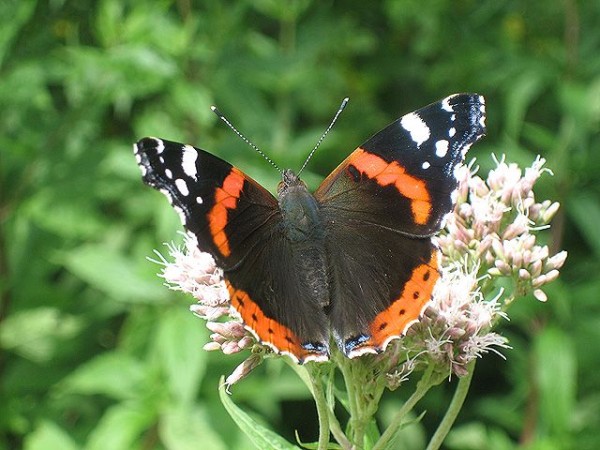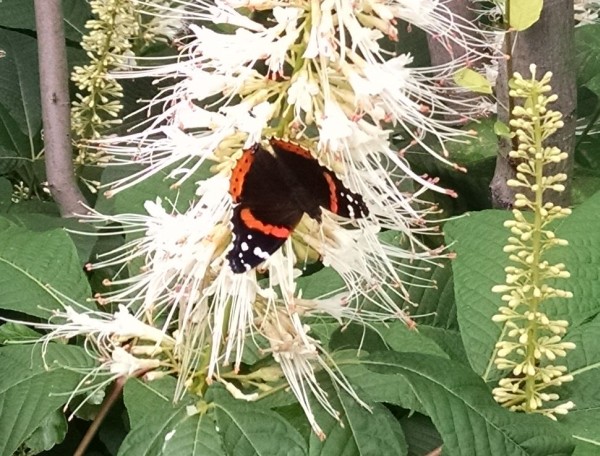
Guess what I found sipping nectar last Sunday …
With my head so full of birds I couldn’t remember this butterfly’s name so I took a lot of bad cellphone photos (below) and looked it up when I got home.

This striking black butterfly is a Red Admiral (Vanessa atalanta), native to Central and North America, Europe, Northern Africa and Asia. That’s why the beautiful photo above is from England.
The species is not winter-hardy so most of North America must be recolonized each spring by southern migrants, says butterfliesandmoths.org. Monarchs aren’t the only butterflies who make long journeys. Red Admirals migrate from South Texas and I’ve seen them fly north over Lake Erie to Canada.
The generation that migrates looks brown where this one is black so they don’t stand out as much. Their underside is not as pretty either but provides camouflage (click here to see).
We don’t often see Red Admirals in flower gardens because they prefer to eat tree sap, fermenting fruit and bird droppings(!). The females look for nettles where they lay their eggs on the tops of the leaves. The caterpillars eat nettles to survive.
Take that, you stinging nettles!
(excellent photo of a red admiral butterfly in England by Zorba the Greek via Wikimedia Commons. Click on the image to see the original.
Poor quality photo of red admiral on bottlebrush buckeye by Kate St. John)
Kate – I just love your blog! Checked in this morning to find the ID explained for a butterfly I’d photographed in my local woods (on a piece of rotting wood) a few days ago but hadn’t had a chance to look up yet. Red admiral, without a doubt! Whether illuminating the fascinating lives of peregrines or introducing a lovely native wildflower or butterfly, you never disappoint. Thank you! 🙂
Thanks for posting. Very good website for butterflies and moths.
do birds eat Red Admiral butterflies?
Linn Cook, I don’t know if birds eat them but… Red admirals have a very erratic and rapid flight a skill that’s necessary to escape flying predators. Since they always fly in escape mode, birds probably eat them.
I’m in East Yorkshire, UK and just watched a blackbird grab a red admiral off the buddleia bush that has been in full bloom all September.
This is first time I’ve seen a red admiral taken although the bush can have up to 20 of them at a time and would surely be a fine banquet spread for any bird that likes them.
Previously I was under the impression that Red Admirals are unpalatable!